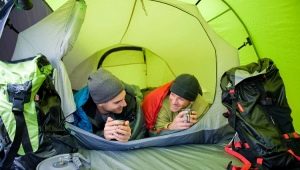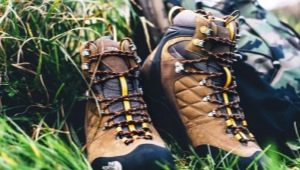Tourist tents: types, overview of manufacturers and recommendations for choosing

The main function of a tourist tent or tent is protection from the vagaries of the weather: rain, snow, hot rays of the sun. With it, you can also comfortably equip a camping or tourist day.
Peculiarities
The awning allows you to hide from the scorching rays or precipitation, but it is of little use for protecting against insects. The classic shape of the awning is a rectangular piece of fabric with eyelets along the edges. For example, a traditional soldier's cape can easily be converted into a canvas awning that can be hung between trees or stakes. However, the main disadvantage of this product is its heavy weight, the tarpaulin absorbs moisture and is difficult to dry.
The size is also small (180x180 cm), which limits its scope. Modern tourist awnings are made of lightweight high-density polymer fabrics that can withstand significant tensile loads, and special impregnations make them practically waterproof.

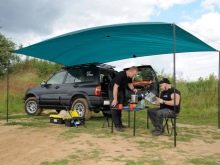

There are also special impregnations that prevent the material from igniting from accidental sparks of a fire. The size of modern tents varies widely.
A tent can provide more comfort. Most modern tourist tents have a collapsible frame and strong guys, allowing you to install it in a variety of conditions. There are models that differ little in characteristics from large tents. The walls of such tents can be equipped with a mosquito net, transparent windows or be tightly closed with special panels.
Some models are supplied with a removable floor.


Advantages and disadvantages
The main advantages of tourist tents are versatility and lightness.. The awning, with its small mass, easily turns into a canopy from rain or sun. With it, you can make a primitive shelter, protected from the wind. In an extreme situation, an awning can become a simple tent. Tents, as more complex equipment, of course, allow you to equip a bivouac or a campsite with more comfort. Of particular note is the height, due to which the tents are largely superior to any tent. Usually the height under the canopy of the tent is not less than 180 cm, which allows an adult to stand at full height.
There are structures that can be used as a temporary home, bath, kitchen, shower or toilet. The frame makes these structures strong and stable, but it also adds weight to them, which significantly reduces mobility and transportability. The tent is suitable for car tourists or as a temporary stationary structure - an exhibition pavilion, a portable outlet, a summer cafe.
Carrying it in a backpack is a thankless task, the metal frame will make up the bulk of the weight. And the dimensions of most tents are unlikely to allow you to pack them in a backpack.
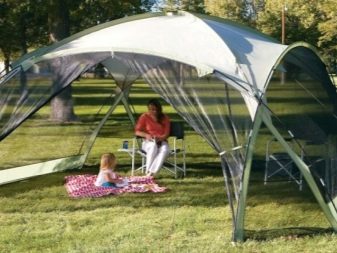
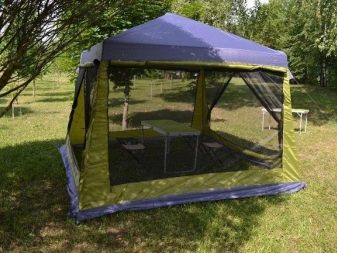
Kinds
A camping canopy is the simplest shelter option. As a rule, its weight is small, and any special devices for its installation are usually not required. With the help of braces or pieces of rope included in the kit, the awning can be easily stretched between the trees in the forest or fixed on stakes-racks stuck into the ground, fixing with the same braces. Another thing, tents. Due to the breadth of their application, they are very diverse.
The lightest summer tents. They have a lightweight frame that holds its shape. Such designs can be square, pentagonal, hexagonal and even octagonal. Polygonal structures can be considered the most resistant to winds and precipitation.
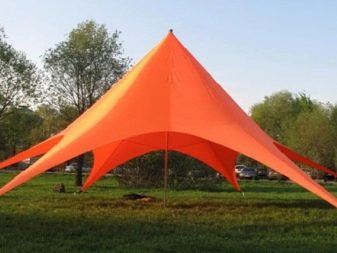
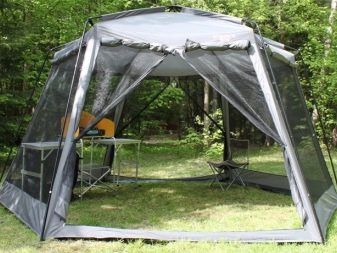
There are also frameless models, for the installation of which a single pole-mast placed in the center can be used. The edges of the tent-tent are stretched along the perimeter with the help of stretch marks. One example of such a structure is an army tent made of tarpaulin. However, there are more advanced options for stretch tents that cover a large area.
Often, summer tents are devoid of walls, which brings them closer to simple canopies. Frame camping models can be equipped with removable wall sheets with a mosquito net made of transparent material or opaque - from the same material as the roof of the tent. The most important characteristic of summer tents and canopies is their moisture resistance - the ability to withstand the pressure of a column of water, which is very important when protecting from heavy rainfall.

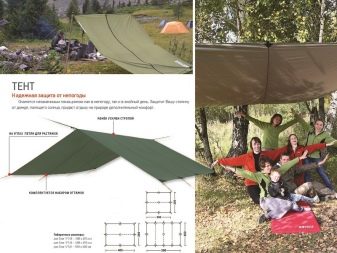
The same indicator plays a significant role in resisting strong winds. Frameless structures in this case absolutely lose to frame models with walls.
You can also use some models of summer tents as a spacious portable house. In this case, a moisture-proof floor is provided. According to the characteristics, such a tent is practically indistinguishable from a large tourist tent. A hole can be made in its roof for the exit of the chimney, and then a camping stove can be placed inside or pipes from the external heating system can be drawn inside.
Large tents are often used as camp kitchens or bathhouses.. And a large lightweight summer structure can be used to accommodate a large number of people, such as pavilion. Structurally, such tents can be combined into complexes of various configurations and, accordingly, purposes.

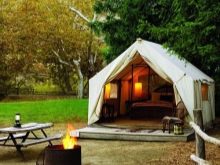
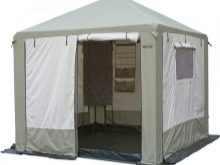
The most technologically advanced option is folding tent. Its main merit is built-in frame, allowing you to lay it out almost instantly. When folded, such a tent can occupy a significant place, so it is of little use for hiking trips, but it is perfect for an auto expedition.
A special category is made up of tents with an inflatable frame, which do not require any manipulation of complex structural elements or racks. The highest degree of manufacturability of this type of product is a hemisphere tent. This bubble tent has transparent or partially transparent walls, the elasticity and shape of which is maintained by a constantly running compressor, powered either from a stationary electrical network or from a generator, but there can be no question of using such a structure on a hike.
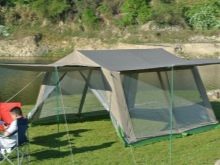
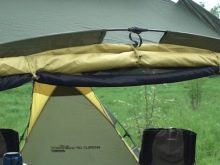

Winter tents differ in many respects. Their frame must be much stronger in order to withstand both gusts of wind, and the resulting ice, and sticking snow. The awning of the winter tent should be double - this is necessary for better thermal insulation and to reduce the formation of condensate and ice. About any removable walls (mosquito net, transparent window, opaque shutter) are out of the question. Small ventilation windows with dense canopy shutters are acceptable. The walls of the winter tent should be solid, without lightning.
Mandatory attribute - waterproof floor. A window for a chimney with a special fire-resistant coating. Above the inlet valve, a snow canopy or even a vestibule is desirable. In winter tents, it may be possible to use it for winter fishing - the floor has a special opening valve that allows access to the ice and the hole.


Dimensions
Sizes of tents and canopies can vary widely. The main limitation in their use for tourists is still not the size, but the weight. It is far from always determined only by the size - the thickness and density of the fabric used also affects. If a solo hike is supposed, then the choice of a large tent will be completely unjustified. A piece of waterproof fabric measuring 2x2 meters is enough. But if we are talking about an event in which several people will participate, such a small canopy is indispensable.
A medium-sized tent should cover an area of at least 3x3 meters. Under its canopy, 3-4 folding chairs and a folding table will fit quite well. With relative comfort, you can also place 2-3 beds there. Tents measuring 3x4 meters are usually used to equip a recreation area for a long stay or at a stationary campsite.
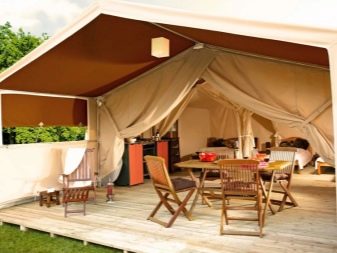
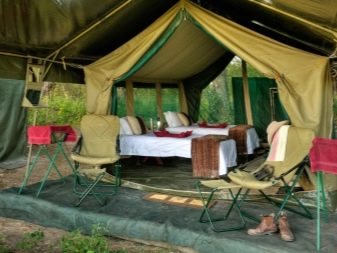
Large 4x6 tents can be used as stationary pavilions, but they are completely unsuitable for a hiking trip, especially on foot.
However, in long-stay tourist camps or various kinds of festivals, they are very appropriate. They can be equipped with a dining room or a lecture hall, a trade or exhibition pavilion. Stationary structures 6x4 in size were widely used in archaeological expeditions, where they are used as a shelter for the excavation from precipitation, wind and the scorching sun.
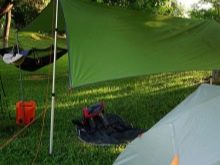
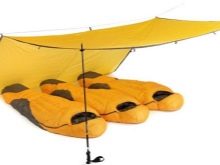
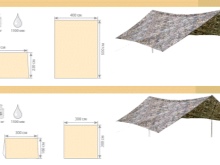
Rating of the best manufacturers
Finding an awning or tent that is suitable in size and characteristics is currently not a problem at all. Many manufacturers offer goods of any price category. The production of such inventory is carried out by both leading companies specializing in tourist equipment, as well as little-known, not yet proven firms.
European companies have long and reliably settled in this market segment. Greenell, Bubble Tree, Columbus. Very high quality universal tourist tents are produced by American companies. Kaiser Sport Luxe, Coleman Compani and Alexika. True, it should be taken into account that in Russian conditions, almost all products can be attributed only to the summer type of tents.
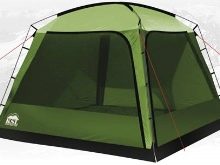
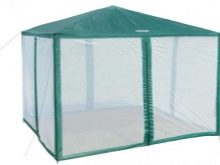
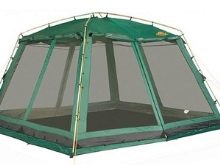
A number of domestic companies (Yukon, Tonnar, Mitek) successfully masters the market of tourist equipment, offering a competitive product - tents of the highest quality, adapted to the changing conditions of Russian nature.
China is actively conquering the market of tourist equipment (Laniu, Green Glade companies). Even little-known Chinese companies currently offer goods of sufficiently high quality at a relatively low price.
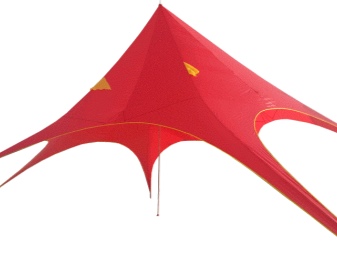
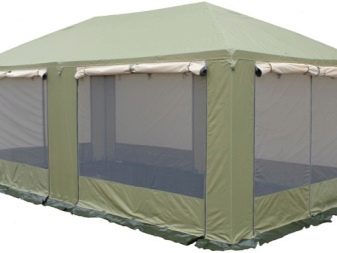
How to choose?
When choosing a tent or awning, first of all, you need to determine what it is for. If you need a portable home for an autonomous hiking trip, the main function of which will be shelter from the rain, it is better to get a small canopy. Such equipment does not need a heavy frame, it is light and compact. It can also be used as an additional awning for tents.
If these are car trips, you can not limit yourself and purchase a spacious tent. For outdoor recreation with the whole family or a large company, comfort is very important, and creating it with the help of such an accessory as a tent will be much easier.
When purchasing such a product, it is important to familiarize yourself with the complete set of the product in advance. Replacing missing racks on a hike or trip will not be easy.

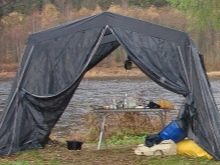
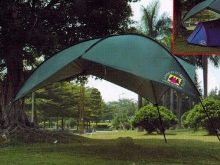
User manual
When purchasing a tent or a simple awning, you must read the instructions attached to it. Installation methods for different products may vary significantly.
- Small tents and tents are quite capable of being erected alone. Large frame structures are best erected by two or even three.
- If the joints of the metal racks are plastic, in no case should distortions be allowed - this can cause the destruction of plastic parts.
- It is impossible to cover the frame with a canopy until it is fully assembled, and all joints have not been checked for strength.
- It is undesirable to use a frame tent without fixing it with braces, as in this case it may be exposed to wind.
- And of course, if the instructions for the tent do not indicate that it has been treated with fire-fighting impregnation, it is unacceptable to place it next to an open fire (fire or barbecue).
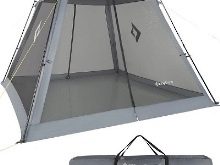

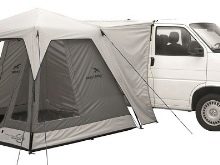
In the next video you will find an overview and installation method of the Terra Incognita Tarp 3x4 awning.























